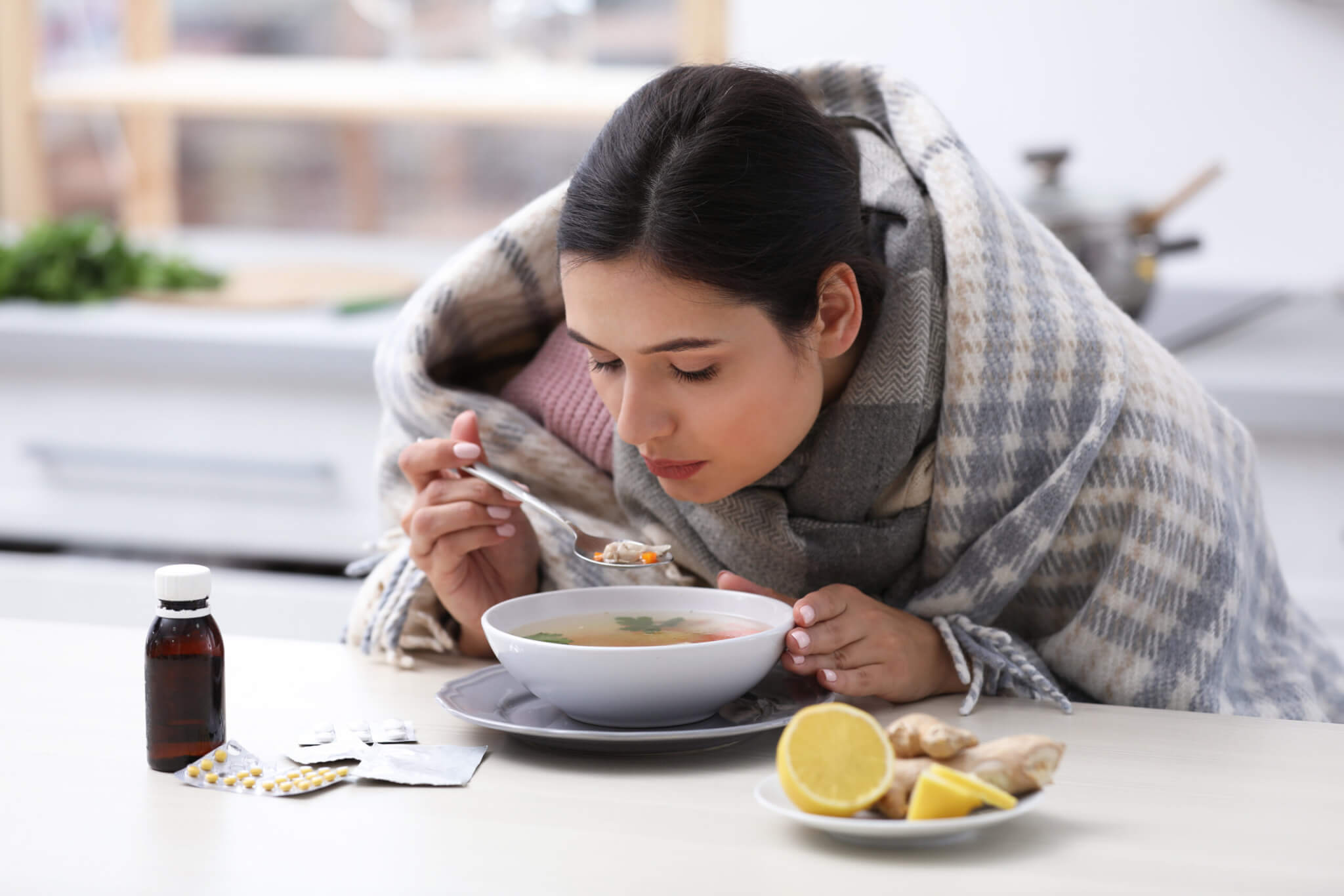We are all quite familiar with the body-chilling ache that comes with a spike in body temperature. In other words, the dreaded fever. Normal body temperature usually ranges from 97.5°F to 98.9°F. Although it varies, the consensus is that a fever is anything over 100.4°F. It’s important to understand that a fever is merely your body’s natural defense mechanism to fight a looming illness. Fevers help to activate your body’s immune response and create a more hostile environment for bacteria or viruses to survive. While it’s a luxury that our bodies put up arms against unwanted invaders, a fever is no walk in the park. Some of the best ways to reduce a fever are tips and tricks you can try at home to help with the discomfort that comes with your body’s armed immunity guards.
If you are trying to take measures to alleviate symptoms for you or your family when sick, taking over-the-counter painkillers or fever-reducing drugs is usually a great option. The average adult gets sick at least three times a year, if not more, and you can bet at least one of those incidents will include a fever. It often comes with uncomfortable symptoms like chills, muscle soreness, headaches, loss of appetite, or nausea. Yikes! So, the next time you get sick, try keeping some of these easy remedies in mind. Remember, any fever over 103°F is considered dangerous and needs medical attention immediately. Also, it is best to consult with you doctor to find the best treatment plan for you. But, if you are taking matters into your own hands, StudyFinds found the seven best ways to reduce a fever or alleviate the symptoms at home while you’re recovering. If you have any other tips share them in the comments below!

The List: Best Ways to Reduce a Fever, Per Health Experts
1. Get Enough Rest

This is one of the best things you can do when you’re ill. Your body is fighting an internal war against the virus or bacteria causing sickness. It’s normal to feel tired, fatigued, or even achy when you have a fever, so make sure you get enough sleep, KHealth says. Once you feel better, you don’t have to force rest.
Sickness is the best time to slow down and relax. If you have a fever, that means your body temperature is significantly higher. Definitely save the exercise for when you’ve recovered, Good Housekeeping warns. Even normal activity can raise your body temperature and make you feel worse. Off to bed!
If you don’t feel tired, it is still important to rest, Prevention writes. A fever usually means your body’s metabolic rate is increased and every system is on overdrive, which means its oxygen and fluid demands will be higher. It’s essential not to stress your body out more in order to recover.
2. Hydrate

One of the side effects of a fever is dehydration, meaning fluid intake should increase. Dehydration can make a person feel even more warm and uncomfortable if not managed correctly. Medicine Net recommends taking small sips of water often or offering children small tablespoons of water every few minutes.
If you aren’t up to drinking cold water, try making warm tea or sipping some hot soup. Hot drinks may provide more relief from symptoms like runny nose and chills than cold or room-temperature ones, Business Insider adds. Soup is also a great way to soothe a sore throat and get some key nutrients in if you don’t have the best appetite.
Water alone may not be enough if you are low in essential minerals like potassium, sodium, or calcium. Drink Pedialyte or sports drinks that can replace key electrolytes if you are dehydrated or sweating from a fever, VeryWell Health suggests.
3. Over-the-Counter Medicine

It is not necessary to use medicine to lower a fever every time, but it can be useful if the symptoms are too uncomfortable or the temperature gets too high. Over-the-counter fever medicine can also be used to treat multiple symptoms that come with fever, like body aches and chills, Vicks says.
Don’t reach for just any meds! Doctors typically recommend over-the-counter relievers like acetaminophen or ibuprofen to bring down a fever, according to Medical News Today. While aspirin used to be a go-to, it’s not as common these days. Here’s the thing: taking medicine just to power through work or school isn’t a good idea. A lower fever doesn’t mean you’re no longer contagious, so rest up and let your body fight it off!
It’s also important to read the label on medicine for proper dosage, as nonsteroidal anti-inflammatory drugs (NSAIDs) can interact with other medications or cause serious side effects or allergies, Cleveland Clinic reminds. Prolonged overuse of NSAIDs can cause problems like liver damage or stomach bleeding.
4. Wear Light Clothing

You don’t have to bundle up if you have a fever. “Sweating out” a fever is a myth, and can actually be dangerous if you raise your body temperature too much. It’s best to dress in light, loose clothing so your body can get the airflow it needs to cool down, Advil says.
While a cozy sweater or blanket can be comforting, don’t overdo it. Think light layers or a throw draped over your shoulders instead of a heavy comforter, Prevention writes. The key is feeling comfortable, not roasting hot.
Cleveland Clinic also warns against bundling up. Sweating is actually your body’s way of cooling down, and covering up too much can lead to dehydration. This is especially important for little ones – infants and children have trouble regulating their temperature, so skip the extra layers and keep them comfortably cool.
5. Cool Down with a Cold Compress or Sponging

When you have a fever, it can be hard to regulate your body temperature, or you might feel cold when you are actually hot. Sometimes, a cold compress can help, Good Housekeeping claims. Laying a wet washcloth on your forehead or face can help lower your core body temperature, but the fever will only lower in response to your body’s immune system.
Here’s a cool trick: tepid sponging! Simply soak a washcloth in lukewarm water and gently wipe down areas where you tend to feel the heat most – your forehead, armpits, and groin, explains Medicine Net. This can help bring your temperature down and make you feel more comfortable.
Vicks notes that tepid sponging is normally done for around five minutes, but it may not be as effective a method to reduce fever as over-the-counter medication. It is mostly used to soothe physical discomfort temporarily but doesn’t have much impact on overall body temperature.
6. Take A Lukewarm or Cool Bath

If you feel well enough, try taking a lukewarm or cool bath. Don’t let the water get too cold, as shivering can raise body temperature, Robitussin recommends. A sudden drastic change in temperature can be counterproductive as the body reacts to try to recover temperature balance.
Soak in the tub for no longer than 20 to 30 minutes if you opt for a bath instead of a shower, VeryWell Health advises. Make sure to dry your hair and wear sufficient clothing after exiting the bath. Children should opt for sponge baths, depending on the intensity of symptoms.
If body aches or muscle soreness are symptoms bothering you during your fever, a lukewarm soak could relieve muscle tension and stress, Medicine Net notes. Although this method is great at reducing fever, again, it is only a temporary measure to relieve symptoms. Your fever will likely return soon after.
7. Remember to Eat

Eating may be the last thing on your mind when sick, as illness often reduces appetite, and a sore throat and tonsils may make it painful to swallow solid food. However, eating is the most important thing at this time to give the body the energy it needs to keep fighting the virus or bacteria, KHealth mentions. The old phrase “starve a fever, feed a cold” is also a myth.
Don’t worry about how much you eat when sick. Simply focus on fluids and eating small amounts of whatever appeals to you, Prevention explains. Soup is a one-two punch: it keeps you hydrated (hello, fluids!), and it’s packed with nutrients your body needs to fight off whatever bug you’ve got. Plus, it’s easy to digest and chew, which is a major win when you’re not feeling your best.
You’ll want to avoid heavy, greasy food or anything that can cause indigestion, which can add to your discomfort. Try small, plain light meals, like oatmeal, warm soup, rice, and chicken, which are easy to digest and prepare if you need to prepare your own meals while sick, (Advil).
Editor’s Tip: Bath or Sponge Bath in Vinegar
As a combination of a few of the tips on this list, StudyFinds Associate Editor Sophia Naughton has a remedy that she calls a miracle worker for fevers. “During my most recent bout with the flu, I had a fever that just would not let up,” says Naughton. “I had taken the highest amount of pain relievers that I could safely ingest and nothing was fighting the fiery chaos that was my body. I was so uncomfortable, I couldn’t sleep or do anything besides sit and burn up. Luckily, my mom came to the rescue, as usual. She had me take a lukewarm bath with a cup of vinegar in it. She also wiped my face and neck with a cold compress soaked in water and vinegar. This was hands down the only thing that provided any relief. You are welcome.”
Sources:
- Good Housekeeping
- Prevention
- KHealth
- Business Insider
- VeryWell Health
- Medicine Net
- Vicks
- Cleveland Clinic
- Medical News Today
- Advil
Note: This article was not paid for nor sponsored. StudyFinds is not connected to nor partnered with any of the brands mentioned and receives no compensation for its recommendations. This article may contain affiliate links in which we receive a commission if you make a purchase.
